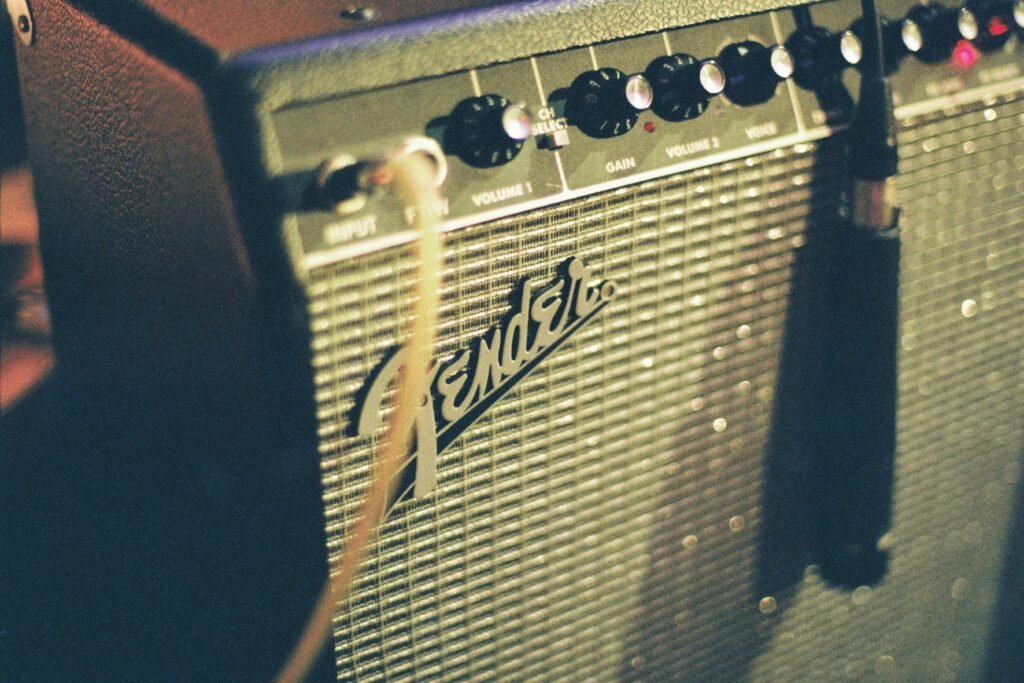Released in 2011, The Outside Room marks Weyes Blood’s first full-length release under her now-recognized moniker, stepping away from the raw noise and abstract experimentation of her earlier Weyes Bluhd material. This album serves as a bridge between her avant-garde roots and the more structured, melodic songwriting that would come to define her later work.
Stylistically, it weaves together elements of psychedelic folk, ambient textures, and lo-fi production, creating a sound that feels both ancient and futuristic. Mering’s deep, haunting vocals, paired with organ drones and tape hiss, set a mood that’s meditative and mysterious. While it leans into abstraction, the album also hints at the emotional clarity and compositional depth she would later fully embrace.
Sonic Exploration

The Outside Room leans heavily into a lo-fi, analog aesthetic that envelops the listener in a world both distant and oddly intimate. The production is not polished in the traditional sense. Instead, it feels organic and hand-crafted, filled with ambient hiss, reverb-drenched spaces, and the warm crackle of tape. This rawness isn’t a flaw—it’s an intentional layer that enhances the album’s dreamlike quality and reinforces its themes of memory, introspection, and otherworldliness.
The musical arrangements on the album are minimal yet deeply evocative. Mering’s use of the pump organ is central, its droning tones forming a sonic foundation that’s both ancient and cinematic. Around it swirl sparse guitar lines, field recordings, and subtle electronics. The instrumentation never overwhelms the vocals; instead, it serves to highlight her rich, alto voice, which carries an emotional weight that’s at once detached and devotional. The vocal layering throughout the record is particularly striking, creating ghostly harmonies that echo through the mix like remnants of a half-remembered past.
Genre-wise, the album nestles itself comfortably within the psychedelic folk tradition, but it does so with an experimental edge. It also touches on ambient music and early gothic influences, suggesting echoes of Nico, Grouper, and even the minimalist tendencies of Terry Riley. Yet, it never settles into imitation. Instead, The Outside Room feels like its own ecosystem—built from familiar elements but arranged in a way that feels entirely personal and new.
Lyrical Analysis

The lyrics of The Outside Room unfold like fragments of dreams, filled with vague memories, spiritual longing, and emotional unrest. Natalie Mering doesn’t write in a straightforward or narrative style on this album; instead, she favors impressionistic lines that hover between the personal and the mythic. Themes of isolation, transformation, and cosmic searching surface repeatedly, offering a window into a psyche that feels untethered yet deeply introspective.
Recurring motifs of nature, shadowy figures, and emotional distance thread through the album, often presented in language that is sparse but evocative. Mering’s words suggest more than they explain, using poetic ambiguity to draw the listener into a private world. The lyrics often feel like overheard thoughts or lines from an old spiritual text, half-erased and reinterpreted through a contemporary lens.
This abstract approach heightens the emotional impact. Rather than spelling out her feelings, Mering invites listeners to feel their way through the songs, making space for personal reflection. There’s a quiet melancholy in her words, but also a sense of reverence and acceptance. The result is a lyrical style that doesn’t just accompany the music—it deepens its emotional weight.
Cohesion and Flow

The Outside Room unfolds with a meditative pace, drawing the listener into its hazy atmosphere from the first note and holding that mood with careful intention. The transitions between tracks feel seamless, as if the songs are different movements in a larger suite rather than standalone pieces. Each track leads gently into the next, not with dramatic shifts, but with a subtle unfolding of tone and texture. This continuous flow reinforces the album’s dreamlike quality and creates a sense of being suspended in time.
There is a quiet narrative at play, though it is emotional rather than explicit. The record begins in a space of introspective stillness and slowly builds toward moments of revelation and emotional release, only to retreat again into ambiguity. It’s not a traditional arc with a climax and resolution, but rather a circular journey—one that returns the listener to the same reflective space in which it began.
Thematically and stylistically, The Outside Room maintains a striking level of consistency. The lo-fi aesthetic, the ghostly organ tones, the layered vocals, and the poetic ambiguity of the lyrics all work in concert to create a unified sonic and emotional world. There are no jarring departures in tone or execution. Instead, the album feels like a single breath, held gently across its runtime.
Standout Tracks and Moments
While The Outside Room is best experienced as a whole, certain tracks do rise to the surface with particular clarity and resonance.
Romneydale
“Romneydale” opens the album with an almost ritualistic calm, setting the tone with its hypnotic organ lines and Mering’s deep, layered vocals. It feels like a fog lifting slowly, giving listeners their first glimpse into the album’s otherworldly terrain.
Storms That Breed
“Storms That Breed” stands as one of the album’s most affecting pieces. The track’s spare arrangement—centered on a mournful organ drone—provides space for Mering’s voice to take on an almost hymn-like quality. There’s a sorrow in her delivery that is both restrained and immense, as if she’s channeling something older than herself. The simplicity of the instrumentation allows the emotional weight of the song to settle in deeply.
In the Isle of Agnitio
Another key moment arrives in “In the Isle of Agnitio.” Here, subtle shifts in harmony and tone create a feeling of slow-motion revelation. The use of silence and space between phrases becomes as important as the notes themselves, heightening the tension and mystique. This track captures the album’s ability to turn minimalism into something profoundly expressive.
Lost in Dreams
“Lost in Dreams” closes the album with a sense of fragile transcendence. Its echo-laden textures and gently descending melodies offer a kind of resolution—not in a narrative sense, but as an emotional exhale. It encapsulates the album’s core feeling: a quiet longing that never fully settles, always reaching just beyond the edge of clarity.
Artistic Contribution and Innovation

The Outside Room holds a unique position within the landscape of early 2010s experimental folk and lo-fi music. At a time when many artists were gravitating toward digital clarity and high-fidelity aesthetics, Weyes Blood leaned deliberately in the opposite direction. Her commitment to analog textures, medieval tones, and spectral minimalism set the album apart—not just as a throwback, but as a deliberate reshaping of the folk tradition into something eerily modern and timeless.
Rather than adhering strictly to the norms of psychedelic folk or ambient music, the album occupies a liminal space between genres. It borrows the stark, emotional gravity of early gothic folk and fuses it with abstract compositional strategies drawn from noise and drone traditions. This blend is not flashy or obvious, but it quietly rewrites what folk-adjacent music can sound like, especially in a digital era.
What stands out as particularly innovative is the album’s restraint. Mering doesn’t chase complexity for its own sake. Instead, she trusts the power of slow, deliberate pacing, of blurred edges and unresolved tension. Her use of the pump organ as a central instrument—a choice more associated with 19th-century hymnals than with modern pop or folk—feels both bold and thematically apt. The album’s exploration of disconnection, introspection, and spiritual searching is matched by its sonic choices, which often seem to hover outside time.
In this way, The Outside Room not only contributes to the genre but subtly reshapes its contours. It paved the way for the more expansive, orchestrated records that would follow in Weyes Blood’s discography, while also influencing a new wave of artists interested in combining lo-fi aesthetics with emotional and philosophical depth. It’s an album that doesn’t shout its importance, but whose quiet innovations continue to echo through the work of others.
Closing Thoughts

The Outside Room is a debut that feels less like an introduction and more like an incantation. With its ghostly textures, sparse arrangements, and lyrical ambiguity, the album doesn’t seek to impress through virtuosity or polish. Instead, it casts a slow, meditative spell that lingers long after the final note fades. Its strength lies in its ability to evoke emotion without overstating it, to build atmosphere through silence as much as sound.
If the album has a weakness, it may lie in its demands on the listener. The lack of clear hooks or conventional song structures can make it difficult to access at first. Some may find its pacing too languid, its minimalism too stark. But for those willing to sit with it, The Outside Room offers a rare kind of emotional intimacy—quiet, patient, and deeply resonant.
In the larger arc of Weyes Blood’s career, this album represents the germ of a vision she would later expand with orchestral grandeur and sharper lyrical focus. But even in its early form, her voice—both literal and artistic—was already distinct. It’s a record that doesn’t just hint at future greatness, but stands on its own as a beautifully haunting exploration of solitude and spiritual searching.
Official Rating: 8/10
This rating reflects the album’s artistic ambition, emotional depth, and enduring uniqueness. While it may not have the accessibility or sweeping production of Weyes Blood’s later work, The Outside Room remains a compelling and important foundation in her discography—one that rewards patience with lasting impact.
